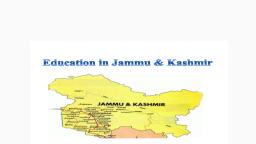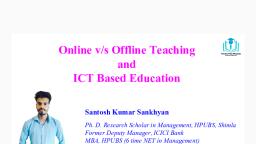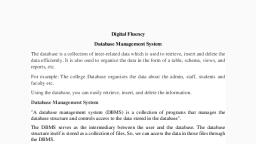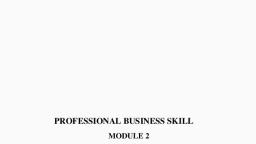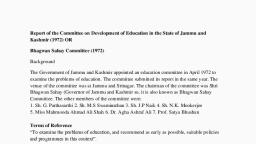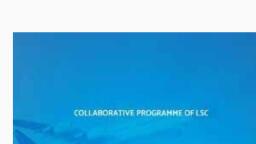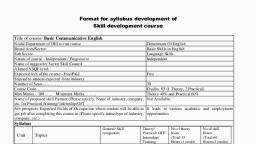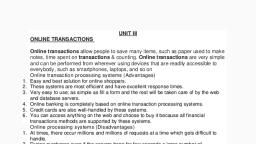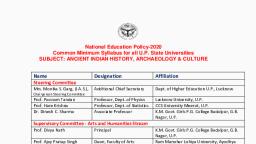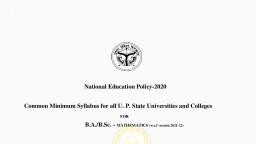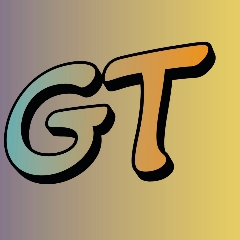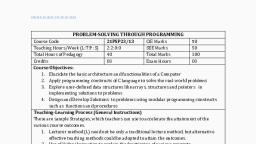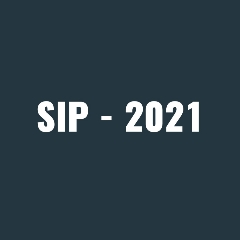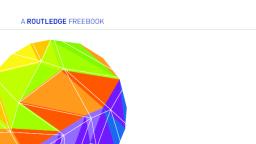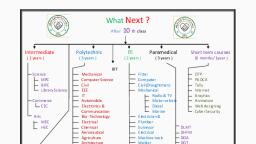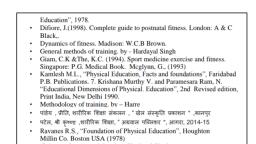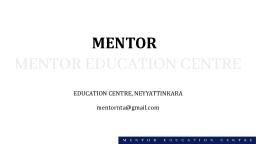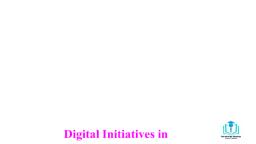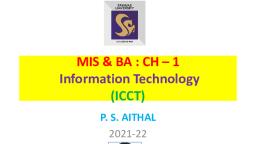Page 1 :
MOOCs, CILT POSITION PAPER, Laura Czerniewicz, Andrew Deacon, Mary-Anne Fife,, Janet Small and Sukaina Walji, , The Course Landscape in Higher Education Image CC BY-SA by Rondine Carstens, , Introduction to MOOCs: definition and, characteristics, Massive open online courses (MOOCs) are a flexible and open form of self-directed, online learning, designed for mass participation. There are no fees or entry requirements and no formal academic, credit is available. While completion rates are low (on average ten per cent1) due to varying, motivations for enrolling in a MOOC, absolute numbers of participants who complete are usually, high. While access to the course material is free, MOOC platform providers often offer certificates of, completion at a cost. MOOC platforms provide institutions with cloud-based hosting environments, for delivering courses, offering scale and functionality while the institution provides the course, material and reputational value., The major English-medium MOOC platform providers are Coursera, edX, Canvas and FutureLearn;, and there is a multitude of smaller platforms. Each platform has its technical infrastructure and, business model; for example, some platforms align themselves with institutions, whereas others allow, individual educators more freedom.
Page 2 :
The affordances of MOOC technology are as follows:, ●, , Educator involvement: While educators are involved in the design and production of the, MOOC, their involvement during the running of the course is minimised because of the lack, of formal assessment or formal academic credit., , ●, , Engagement: It is possible to engage with a large number of students via discussion forums., , ●, , Re-watchable: Students are able to watch and re-watch lecture videos., , ●, , Scale: MOOCs are designed to reach a large number of students., , ●, , Assessable: Most MOOCs include in-video, concept-check questions, with immediate, feedback, as well as peer review., , ●, , Customised learning experience: Participants can learn at their own pace and choose which, material they engage with., , Trends, While traditional online courses are not new, the success of the present format is a recent, phenomenon. The first large open online course recognised as a MOOC was conceived by the, University of Manitoba in 2008. Wide public interest in MOOCs followed later in 2011, with an open, online course in artificial intelligence by Stanford University and Massachusetts Institute of, Technology (MIT). This course attracted over 160 000 students from more than 190 countries. In, 2015 Coursera was the largest platform provider, with a third of all MOOC courses on offer., MiriadaX became the first non-United States MOOC provider to cross 1 million registered users,, tapping into the large Spanish-speaking market worldwide. The top three subject areas in 2013 and, 2014 were in the Humanities, Computer Science and Programming, and Business and Management2., In 2014, the number of universities offering MOOCs doubled to 400 universities, resulting in the, number of cumulative courses doubling to 2 4003., , MOOCs in the broader higher education, landscape, In the curriculum landscape MOOCs are located in the non-formal space. There are a number of, interesting experiments taking place, with MOOCs in the semi-formal space and exploring new types, of accreditation., ,
, , 2
Page 3 :
Figure 1: The curriculum landscape, , While MOOCs are a form of online course, they differ in several ways, as explained in Table 1., , Table 1: Differences between formal online courses and MOOCs, Online courses, , MOOCs, , Cost to user, , Fees, , No fees; possibly certificates and/or, support, , Entrance requirements, , Yes, as per conventional courses, , None, , Scale, , Limited. Capped by resources available, for support and assessment, , Thousands. Savings due to limited, lecturer support, , Lecturer’s role, , Responsible for curriculum alignment,, quality assurance (QA) and support, , Flexible role regarding the curriculum., Limited individual support, , Copyright, , Largely proprietary. Some open, , Content may be proprietary or open., User-generated content often © MOOC, provider, , Providers, , Distance education providers, , Traditional residential research, universities partnered with private, companies, , Analytics, , No, not usually, , Yes, one of the promises, , Certification, , Conventional, , Non-conventional, , Quality assurance, , Aligned with the usual formal courses, QA processes, , As per non-formal offerings, ,
, , 3
Page 4 :
Categories of MOOCs, MOOCs can be differentiated in terms of the strategic goals that they aim to address. A primary, distinction is between inward-facing courses (aimed at existing students) and outward-facing courses, (aimed at participants with no connection to the university). A further distinction is made between, the following categories, with categories 1 and 5 representing outward-facing and 2, 3 and 4, representing inward-facing courses:, ●, , Category 1 – Teaching showcase: General interest course in which an institution’s teaching is, showcased, with the aim of raising the appeal or reputation of the institution., , ●, , Category 2 – Gateway skills: Aimed at prospective undergraduate students, with the, intention of preparing/upskilling prospective students for a particular area of study., , ●, , Category 3 – Graduate literacies: Provides students entering postgraduate level of study with, opportunities to develop the necessary skills, such as proposal writing, research methods and, statistical analysis., , ●, , Category 4 – Professional showcase: Focuses on professional certification and professional, development., , ●, , Category 5 – Research showcase: Aimed at raising the appeal of the institution as a centre for, research excellence., , Figure 2: Types of MOOCs, ,
, , 4
Page 5 :
Emergent forms of MOOC-type courses, As shown in Figure 1, there are emergent new MOOC – type forms being explored, spawning new, acronyms. Some of these are:, ●, , OBC: Open Boundary Course – formally enrolled students as well as outsiders study the, course together – although with different levels of educational support, , ●, , SPOC: Small Private Online Course, , ●, , MOC: Massive Online Course, , ●, , Wrapped MOOC: A MOOC that is adapted for paying students or included as part of an, existing course for enrolled students, , Applications of MOOCs in a South African, context, The application of MOOCs in a South African context, as elsewhere, spans a continuum of formal, and informal educational sectors, as well as the workplace learning/continuing educational sector. On, one end, MOOCs can be viewed as learning opportunities that may function as either informal, learning, or, conversely, as ‘standalone’ or independent/alternative form of a qualification. In, contrast, MOOCs could be integrated into formal education or workplace learning/continuing, education, even utilising new forms of certification., , MOOCs and the formal education sector, Participating in MOOCs does not confer formal university credit: this form of educational delivery, therefore cannot be seen to be contributing to expanding formal learning opportunities on a par with, a university or further education qualification, in the way UNISA offers. Specific types of MOOCs are, likely to have a role to play in the performance, success or throughput rates of formally enrolled, students in South African universities; in the categorisation of MOOCs shown in Figure 2, MOOCs, that provide gateway skills or opportunities to develop post-graduate literacies could play a part in, improving the educational outcomes of currently enrolled students given the poor throughput rates, in the South African system. Wrapped MOOCs also provide opportunities for enriching and, supplementing courses4. SPOCs, such as HarvardX Law courses, where local face-to-face experts draw, on and add contextualised knowledge, are also a valuable way of gaining free access to world-class, expertise., ,
, , 5
Page 6 :
Workplace and non-formal contexts, While the MOOC movement is emergent, global trends have made it evident that one clear, application of MOOCs is workplace or corporate training. MOOCs may provide opportunities for, students to enter the workplace through providing them with exposure to new fields or training in, specific skills, often in emerging industries. The MOOC platform providers are beginning to offer, learning pathways of certification (Coursera Specializations or edX xSeries), which, while not akin to, university credits, may offer alternatives to qualification. The current trend for students to showcase, their MOOC certificates on CVs, job portals or personal profiles (such as LinkedIn) is apparent., Another related application is MOOCs that offer continuing professional development opportunities., MOOCs that cater to this sector offer more structured qualifications at relatively low cost, thus, increasing accessibility. Some MOOC providers are calling these qualifications ‘nano-degrees’. In, adopting this model, South African institutions could forge connections with industry organisations, to cater for sector needs and in areas of skills shortages., , Costs of MOOC production, The costs of producing a MOOC vary considerably, and, as yet, there is no viable business model to, recoup all the expenses incurred in production. The sale of certification generates some income and, extensions to this aspect of the model (for example, the introduction of linked courses in a, programme of study) and new uses of MOOCs (such as add-ons and paid-for additional services) are, being explored with some success by institutions globally. Some of the international platforms, (Coursera and FutureLearn) do not require any upfront financial contribution from the partner, universities, as they operate on the assumption that the courses flighted on the platforms will generate, future income, which will be shared between the platform and the university partner. In contrast, edX, is a non-profit venture that requires partner university contributions to fund its operations. Some, universities fund their MOOC programmes through donor funding., , The major cost drivers in MOOC production and delivery are: the number of, faculty members, administrators, and instructional support personnel, participating in the process; the quality of videography; the nature of the, delivery platform; technical support for participants; programming for special, features such as computer code auto-graders, virtual labs, simulations, or, gamification; and analysis of platform data. MOOC production teams that, were described to us seldom included fewer than five professionals and, in at, least one instance, over 30 people were involved. Course length was not a, reliable predictor of costs., ,
, , 6
Page 7 :
It is difficult to accurately cost a single MOOC because of the huge variety of types of courses. Reports, released by Northern universities range from US$39 000–US$325 3005., The main costs of producing MOOCs, from an institutional perspective are:, •, , Institutional infrastructure: Setting up procedures for decision-making about platforms and, the selection and quality assurance of courses is time consuming for a range of institutional, personnel (from university leadership to legal advisors). Initial upfront investment may be, required for some international platforms (which could be sourced from donor funding)., , •, , Support staff: Generally MOOCs require a support team of learning designers, video, production specialists and academic content assistants to work on creating the course content, – although there are a range of options, from repurposing existing internal units, to setting, up regional collaborations between institutions for shared capacity development, to, outsourcing these roles to private providers. The actual costs will depend on the nature of the, particular course – however, it can be assumed that a single course will require the inputs of a, team of two or three support staff for several months., , •, , Educators: Depending on the type of course and the support available, academics typically, report spending between 100 and 400 hours in the process of production6. Unlike traditional, courses, the bulk of the input is done in production, while significantly less time is spent, while the course is running. Effectively, teaching time is being built into the course during, production. In some instances, academics will require funding to pay for someone to teach in, their place for the period devoted to production. Given that course production does not offer, any academic career rewards, motivation to spend the time on producing a MOOC, rather, than other academic activities will have to be considered., , •, , Production: MOOCs on the major international platforms favour short video-recorded, lectures as the main media for the content. High-quality video is costly and requires access to, equipment (which can be hired or bought). The actual cost per minute of video will depend, on the style of the segment: whether it is a cheaper screencast or a high-production video., These costs range widely from R2 000–R12 000 per short video. When estimating this cost,, the staffing and equipment (filming studio or video camera, sound and lighting) are included., Instead of fully investing in capital equipment and personnel, it is possible to outsource to a, commercial video production company or hire in contractors for intensive film shoot days., , •, , Course material: If specific course material under copyright licence is required, there may be, costs incurred in buying the rights to use it. Generally, open-source material or originally, produced material is favoured in the production of MOOC., ,
, , 7
Page 8 :
Caveats and concerns, , Resources for further reading, , There are several concerns about MOOCs,, most of which have been alluded to. In, short, the issues that may be of concern, include:, •, , Forms of certification: For some,, lack of certification or the emergent, nature of new forms of certification, may be a concern., , •, , Digital, , and, , Research, , critical, , has, , literacies:, , shown, , that, , participating in MOOCs requires, critical and digital literacies, that is,, skills and competences to thrive and, learn in a digital environment 7., •, , Connectivity:, , Most, , MOOCs, , include video, and assume good,, reasonably priced connectivity and, bandwidth,, , thus, , participation, , for, , limiting, , many, , South, , Africans, especially those in rural, areas, , and, , away, , from, , formal, , institutions., •, , Language: MOOCs are delivered, primarily, , in, , English,, , although, , globally language-specific platforms, are, , emerging,, , especially, , in, , European languages (Spanish and, French)., •, , Copyright:, , MOOCs, , and, , other, , online courses change the rules of, engaging, , with, , copyright, , Bayne S & Ross J (2014) The pedagogy of the MOOC:, The UK view. York: Higher Education Academy., Retrieved from, http://www.heacademy.ac.uk/resources/detail/elt/the_p, edagogy_of_the_MOOC_UK_view, Class Central (2014) Online courses raise their game: A, review of MOOC stats and trends in 2014. Retrieved, from https://www.class-central.com/report/moocsstats-and-trends-2014/, Hollands FM & Tirthali D (2014) MOOCs:, Expectations and Reality. Center for Benefit-Cost, Studies of Education, Teachers’ College, Columbia, University. Retrieved from, http://www.academicpartnerships.com/sites/default/fil, es/MOOCs_Expectations_and_Reality.pdf, Jordan K (2014) Initial trends in enrolment and, completion of massive open online courses. The, International Review Of Research In Open And, Distributed Learning 15(1). Retrieved from, http://www.irrodl.org/index.php/irrodl/article/view/16, 51, Liyanagunawardena T, Williams S & Adams A. (2013), The impact and reach of MOOCs: A developing, countries’ perspective. eLearning Papers (33). ISSN, 1887-1542. Retrieved from, http://centaur.reading.ac.uk/32452/1/Indepth_33_1.pdf, Mazoue J (2014) Beyond the MOOC model: Changing, educational paradigms (EDUCAUSE Review), EDUCAUSE.edu, Published 10 November 2014., Retrieved from www.educause.edu/ero/article/beyondmooc-model-changing-educational-paradigms, , Reich J (2015) Rebooting MOOC. Research Science, 347(6217): 34–35 DOI:10.1126/science.1261627, , in, , numerous ways (the student body, extends beyond the university, user, ,
, , Atenas J (2015) Model for democratisation of the, contents hosted in MOOCs. RUSC. Universities and, Knowledge Society Journal 12(1): 3–14. Accessed from, http://dx.doi.org/10.7238/rusc.v12i1.2031, , Wintrup J, Kelly Wakefield K & Hugh Davis H (2015), Engaged learning in MOOCs: A study using the UK, Engagement Survey, Retrieved from, https://www.heacademy.ac.uk/node/10346, , 8
Page 9 :
content is generated etc.). It is a more complex intellectual property environment., , Recommendations, 1. MOOCs watching: MOOCs in their present form are morphing into a variety of formats and, models as purposes and possibilities become clearer and their place in the online landscape, solidifies. It is essential that institutions remain alert to these ongoing changes and interpret, them in the light of local conditions., 2. Collaboration: Given how expensive MOOCs can be to produce, institutions should identity, areas of mutual interest in the South African context and work together to develop them., Gateway MOOCs and post-graduate literacies are immediate possibilities, but there are, others., 3. Mind the copyright: Institutions need to increase their capacity in dealing with copyright, issues, both as users and as developers., 4. Experiment: New forms of online education, including MOOCs, are the way of the future., Institutions should experiment with possibilities that suit their own conditions and needs., These may be low key and relatively inexpensive; they do not always need to be high-tech, solutions., 5. The last word – create! It is important for local universities to participate as producers, not, simply as consumers of MOOCs from elsewhere., , References, 1 See, , 5 Hollands FM & Tirthali D (2014) MOOCs:, , http://www.katyjordan.com/MOOCproject.html, , Expectations and Reality. Center for Benefit-Cost, , 2 https://www.class-central.com/report/moocs-, , Studies of Education, Teachers College, Columbia, , stats-and-trends-2014/, , University. p. 138, , 3 https://www.class-central.com/report/moocs-, , 6 Hollands FM & Tirthali D (2014) MOOCs:, , stats-and-trends-2014/, , Expectations and Reality. Center for Benefit-Cost, , 4 See, , Studies of Education, Teachers College, Columbia, , https://shanaligovender.wordpress.com/2014/10/0, , University, , 2/seminar-wrapping-moocs-for-students-in-the-, , 7 For an elaboration of this point, see Haggard S, , global-south-last-day-unleashing-the-power-of-, , (2013) The Maturing of the MOOC: Literature, , online-networks-for-elearning-in-africa/ for an, , review of Massive Open Online Courses and other, , elaboration of this point., , forms of online distance learning. London:, Department for Business Innovation, ,
, , 9


